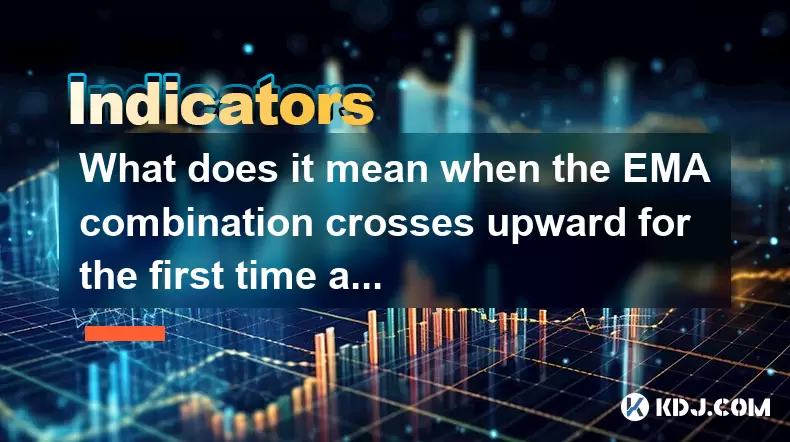-
 Bitcoin
Bitcoin $118600
0.36% -
 Ethereum
Ethereum $3855
1.06% -
 XRP
XRP $3.195
-0.09% -
 Tether USDt
Tether USDt $1.000
-0.04% -
 BNB
BNB $844.5
6.23% -
 Solana
Solana $191.3
2.83% -
 USDC
USDC $0.9997
-0.01% -
 Dogecoin
Dogecoin $0.2376
0.10% -
 TRON
TRON $0.3242
0.83% -
 Cardano
Cardano $0.8222
0.13% -
 Hyperliquid
Hyperliquid $45.26
6.53% -
 Sui
Sui $4.200
-2.56% -
 Stellar
Stellar $0.4336
-1.24% -
 Chainlink
Chainlink $18.86
0.28% -
 Hedera
Hedera $0.2796
-1.75% -
 Bitcoin Cash
Bitcoin Cash $583.3
-1.84% -
 Avalanche
Avalanche $27.06
8.09% -
 Litecoin
Litecoin $112.3
-1.16% -
 Toncoin
Toncoin $3.353
0.58% -
 UNUS SED LEO
UNUS SED LEO $8.968
-0.11% -
 Shiba Inu
Shiba Inu $0.00001395
-0.54% -
 Ethena USDe
Ethena USDe $1.001
-0.03% -
 Uniswap
Uniswap $10.76
0.69% -
 Polkadot
Polkadot $4.175
0.26% -
 Monero
Monero $326.7
1.07% -
 Bitget Token
Bitget Token $4.665
1.61% -
 Dai
Dai $0.9998
-0.02% -
 Pepe
Pepe $0.00001271
0.32% -
 Cronos
Cronos $0.1416
2.01% -
 Aave
Aave $299.3
1.15%
Is the rapid rebound after the death cross of EMA12 and EMA26 a trend continuation or a false signal?
A death cross signals bearish momentum when EMA12 crosses below EMA26, but in crypto, rapid rebounds fueled by whales or news can turn it into a false signal.
Jul 28, 2025 at 05:07 am

Understanding the EMA Death Cross in Cryptocurrency Trading
The EMA (Exponential Moving Average) death cross occurs when the shorter-term EMA12 crosses below the longer-term EMA26, signaling a potential bearish reversal in price trends. This technical pattern is widely monitored in the cryptocurrency market due to its historical correlation with downward momentum. Traders interpret this crossover as a warning sign that the asset may enter a prolonged downtrend. However, in highly volatile markets like crypto, such signals can be misleading. The appearance of a death cross does not guarantee a sustained bearish move, especially when followed by a rapid price rebound. This raises the critical question: is the rebound indicative of trend continuation or a false signal?
The death cross gains significance when it occurs after an extended bullish phase and is confirmed by high trading volume. In cryptocurrencies such as Bitcoin or Ethereum, where price swings are exaggerated, this signal can trigger panic selling, leading to sharp drops. However, due to the decentralized and speculative nature of digital assets, institutional activity, whale movements, or macroeconomic news can quickly reverse such bearish momentum. As a result, the death cross must not be viewed in isolation but within the broader context of market structure and momentum indicators.
Conditions That Define a Valid Death Cross
For a death cross to carry meaningful predictive power, several conditions should be met:
- The EMA12 must close below the EMA26 on a daily or weekly timeframe, depending on the trader’s strategy.
- The cross should occur after a sustained uptrend, indicating a shift in market sentiment.
- Volume should increase during and after the cross, confirming selling pressure.
- Other indicators such as RSI (Relative Strength Index) showing overbought conditions prior to the drop support the validity of the signal.
When these conditions align, the death cross is more likely to precede a bearish trend. However, if volume remains low or price quickly recovers, the signal may lack conviction. In crypto markets, where liquidity can fluctuate dramatically, low-volume crosses are often dismissed as noise. Traders should also assess whether the cross appears on multiple timeframes—such as both 4-hour and daily charts—for stronger confirmation.
Analyzing Rapid Rebounds After the Death Cross
A rapid rebound following a death cross introduces ambiguity. This scenario typically unfolds when price drops sharply, triggers the EMA crossover, but then reverses within a few candlesticks. Several factors can drive such a rebound:
- Short squeezes, where leveraged short positions are liquidated, forcing rapid buybacks.
- Support from key price levels, such as previous resistance zones or Fibonacci retracement levels.
- Positive news events, including exchange listings, protocol upgrades, or regulatory clarity.
- Whale accumulation, where large entities buy the dip, absorbing selling pressure.
In such cases, the EMA lines may recross bullishly (EMA12 above EMA26) within days, negating the earlier bearish signal. This quick reversal suggests that the initial death cross was either premature or lacked market-wide conviction. The speed and strength of the rebound are critical: a strong bullish candle closing above both EMAs with high volume increases the likelihood of a false signal.
Using Additional Indicators to Confirm or Reject the Signal
To determine whether a rapid rebound invalidates the death cross, traders should incorporate converging technical tools:
- MACD (Moving Average Convergence Divergence): After a death cross, if the MACD histogram begins to rise and the MACD line crosses above the signal line, it indicates weakening bearish momentum.
- Volume Profile: A spike in volume during the rebound supports the idea of strong buying interest.
- Bollinger Bands: If the price drops to the lower band and bounces sharply, it may reflect an oversold condition.
- Ichimoku Cloud: If price remains above the cloud despite the death cross, the underlying trend may still be bullish.
For example, if Bitcoin shows a death cross on the daily chart but the price immediately closes above the Kumo (cloud) in Ichimoku, the bearish signal is suspect. Similarly, if the RSI rebounds from below 30 (oversold) and moves above 50, momentum is shifting upward. These tools help filter out false death crosses in volatile crypto environments.
Practical Steps to Evaluate the Rebound
When observing a death cross followed by a rapid rebound, traders can follow these steps to assess the market direction:
- Wait for confirmation candles: Do not act immediately after the cross. Observe the next 2–3 daily candles. If they close above both EMA12 and EMA26, the bearish signal is weakening.
- Check higher timeframes: Examine the weekly chart. If the weekly trend remains bullish, the daily death cross may be a minor correction.
- Monitor order book depth: On exchanges like Binance or Bybit, analyze buy-wall accumulation at key support levels.
- Track on-chain metrics: Tools like Glassnode can show whether large holders are accumulating or distributing.
- Set conditional orders: Place a stop-loss below the recent low if holding long, or a buy-limit order above the rebound high if anticipating continuation.
These steps allow traders to avoid emotional decisions and base actions on multi-layered evidence rather than a single indicator.
Frequently Asked Questions
Can a death cross occur during a sideways market?
Yes, a death cross can appear during consolidation, especially in ranging crypto assets. In such cases, the signal is often less reliable because there is no clear trend to reverse. The EMAs may cross multiple times, generating whipsaws. Traders should use ADX (Average Directional Index) to confirm trend strength—values below 25 suggest a non-trending market where death crosses lack significance.
How long should I wait before concluding a death cross is false?
There is no fixed timeframe, but monitoring the next 3 to 5 trading sessions is practical. If price not only rebounds but also establishes higher highs and higher lows, the death cross is likely invalid. A retest of the crossover zone without breaking lower adds further confirmation.
Does the death cross work the same across all cryptocurrencies?
No, the effectiveness varies. Major assets like Bitcoin and Ethereum tend to produce more reliable signals due to higher liquidity and participation. In contrast, low-cap altcoins with erratic volume may generate frequent false crosses. Always consider market capitalization and trading volume when interpreting the signal.
Should I use EMA12 and EMA26 on all timeframes?
The EMA12/EMA26 pair is optimized for daily and 4-hour charts. On shorter timeframes like 15-minute, these EMAs become overly sensitive, generating noise. For scalping, traders often use EMA5 and EMA10. Adjusting moving averages to suit the timeframe improves signal accuracy.
Disclaimer:info@kdj.com
The information provided is not trading advice. kdj.com does not assume any responsibility for any investments made based on the information provided in this article. Cryptocurrencies are highly volatile and it is highly recommended that you invest with caution after thorough research!
If you believe that the content used on this website infringes your copyright, please contact us immediately (info@kdj.com) and we will delete it promptly.
- Bitcoin, Fiat Devaluation, and Hedging: A New Yorker's Take
- 2025-07-28 22:50:12
- Trump Media, Bitcoin, and Options: A High-Stakes Gamble?
- 2025-07-28 23:10:13
- Elon Musk, SpaceX, and Bitcoin: A $153 Million Mystery
- 2025-07-28 22:30:12
- Pepe, Price Prediction, and Dogecoin: What's Next for Meme Coins?
- 2025-07-28 23:15:12
- Crypto, VCs, and Infrastructure: Building the Future, Not Just Betting on Memes
- 2025-07-28 22:50:12
- Ozak AI: Is This Crypto Gem Primed for a 2025 Takeoff?
- 2025-07-28 22:30:12
Related knowledge

What does it mean when the EMA combination crosses upward for the first time after sideways trading?
Jul 28,2025 at 03:43pm
Understanding the EMA and Its Role in Technical AnalysisThe Exponential Moving Average (EMA) is a widely used technical indicator in cryptocurrency tr...

What signal does the ROC send when it rises rapidly from a low level and breaks through the zero axis?
Jul 27,2025 at 10:15am
Understanding the Rate of Change (ROC) IndicatorThe Rate of Change (ROC) is a momentum-based oscillator used in technical analysis to measure the perc...

What does it mean when the price breaks through the double bottom neckline and the moving averages are arranged in a bullish pattern?
Jul 28,2025 at 10:57am
Understanding the Double Bottom PatternThe double bottom is a widely recognized reversal chart pattern in technical analysis, particularly within the ...

What signal does the DMA fast line cross the slow line above the zero axis?
Jul 28,2025 at 05:42am
Understanding the DMA Indicator and Its ComponentsThe DMA (Difference of Moving Averages) indicator is a technical analysis tool used in cryptocurrenc...

What does it mean that the rebound is blocked after the moving average is arranged in a short position for the first time?
Jul 26,2025 at 10:51am
Understanding the Short-Term Moving Average ConfigurationWhen traders refer to a 'short position arrangement' in moving averages, they are describing ...

What does it mean that the ZIGZAG low point is raised and the high point breaks through the previous peak?
Jul 28,2025 at 03:28am
Understanding the ZIGZAG Indicator in Cryptocurrency TradingThe ZIGZAG indicator is a technical analysis tool widely used in cryptocurrency trading to...

What does it mean when the EMA combination crosses upward for the first time after sideways trading?
Jul 28,2025 at 03:43pm
Understanding the EMA and Its Role in Technical AnalysisThe Exponential Moving Average (EMA) is a widely used technical indicator in cryptocurrency tr...

What signal does the ROC send when it rises rapidly from a low level and breaks through the zero axis?
Jul 27,2025 at 10:15am
Understanding the Rate of Change (ROC) IndicatorThe Rate of Change (ROC) is a momentum-based oscillator used in technical analysis to measure the perc...

What does it mean when the price breaks through the double bottom neckline and the moving averages are arranged in a bullish pattern?
Jul 28,2025 at 10:57am
Understanding the Double Bottom PatternThe double bottom is a widely recognized reversal chart pattern in technical analysis, particularly within the ...

What signal does the DMA fast line cross the slow line above the zero axis?
Jul 28,2025 at 05:42am
Understanding the DMA Indicator and Its ComponentsThe DMA (Difference of Moving Averages) indicator is a technical analysis tool used in cryptocurrenc...

What does it mean that the rebound is blocked after the moving average is arranged in a short position for the first time?
Jul 26,2025 at 10:51am
Understanding the Short-Term Moving Average ConfigurationWhen traders refer to a 'short position arrangement' in moving averages, they are describing ...

What does it mean that the ZIGZAG low point is raised and the high point breaks through the previous peak?
Jul 28,2025 at 03:28am
Understanding the ZIGZAG Indicator in Cryptocurrency TradingThe ZIGZAG indicator is a technical analysis tool widely used in cryptocurrency trading to...
See all articles

























































































